Cornish Rock Cross broilers are commonly raised for meat in commercial houses and on small homesteads like mine. However, are they the best breed of chicken for your farm?
After raising these birds for several years I’ve learned a few things about the Cornish Rock Cross. I’ll break down all the good and the bad below.
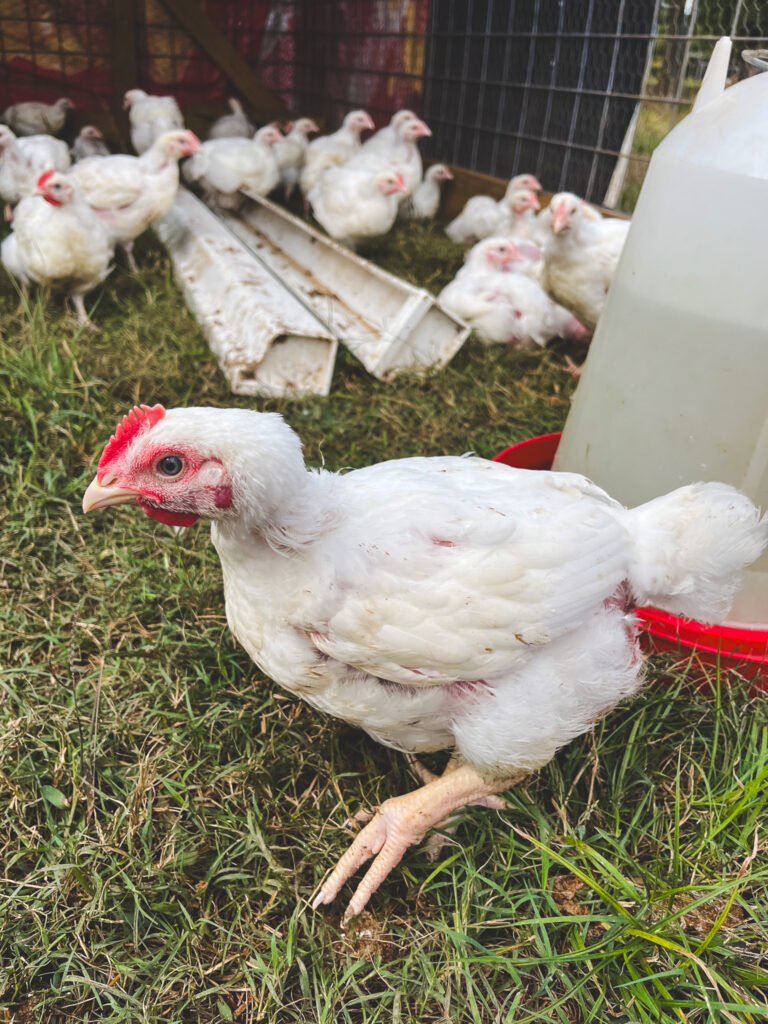
*This post may contain affiliate links which means I make a small commission at no extra cost to you. Read my full disclosure here.*
Cornish Rock Cross Chicks
Cornish Rock Cross Chicks come from selective breeding of a commercial Cornish and a White Rock chicken. If you are thinking of raising these birds, it’s probably best to order them as day-old chicks from a hatchery. You can have some success breeding them yourself a home, but the growth rate and feed conversion won’t be nearly as efficient as the professional breeders.
While these chicks are similar to heritage chicks with their needs for warmth, food, and water, you’ll find that they create a lot of manure, and grow much faster than a traditional chick. You’ll need a larger brooder, with good ventilation to avoid the chicks getting sick.
If you use the deep litter method, you’ll need to add wood chips regularly. I add fresh chips nearly every day for the last two weeks they are in the brooder. If you aren’t using the deep litter method, you’ll need to change their bedding frequently.
Their fast growth rate also means they can leave the brooder faster than other breeds. If you live in a warmer climate, they can move out of the brooder after only 3 weeks. This is far less time than the 6-8 brooding time of other breeds.
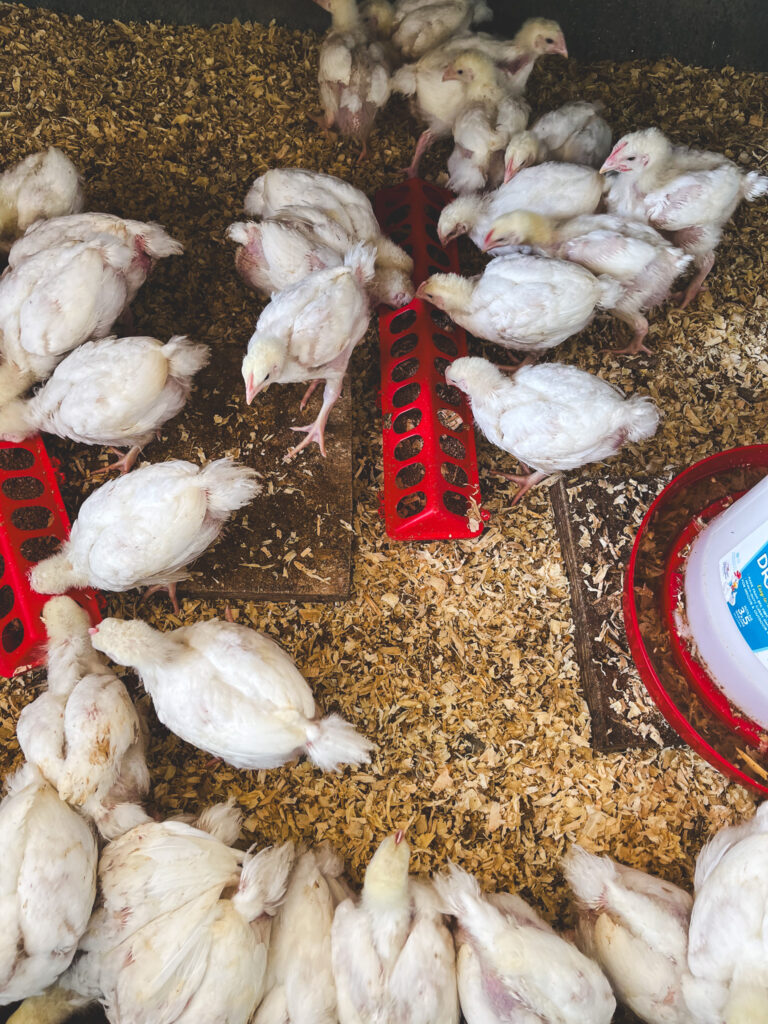
Benefits of Raising Cornish Rock Cross Broilers
Cornish Rock Cross Broilers are known for their large breast and thighs as well as their white feathering and yellow skin. Their meat quality is also exceptional. They’re the most common breed raised commercially for a reason. We love them on our homestead for their many benefits.
1. Feed conversion of the Cornish Rock Cross
The feed conversion rate of the Cornish Rock Cross is much higher than other meat breeds. You’ll have an average gain of 1 pound of meat for every 2 pounds of feed. That’s several times more than a heritage broiler which will require a lot more feed to reach the same weight.
I don’t know about you, but that is a significant savings our small homestead.
2. Flavor
The flavor of the Cornish X is delicious. It has plenty of white breast meat, and large dark meat thighs and legs. The meat is mild and incredibly moist. Not to mention the yellow skin which is the perfect texture for grilling or frying.
We’ve raised heritage and dual-purpose breeds before settling on the Cornish Cross. The flavor wasn’t bad, but it wasn’t as tender and moist as the broilers. There also wasn’t a much of a mild white meat in the breast.
3. Growth rate
The growth rate is the primary reason we love the Cornish X. They’ve been selectively bred to grow at a much faster rate than any other breed out there. Depending on what you are raising them for, they can reach a market weight of 3-5 pounds in 7-9 weeks.
For us, not only does this decrease the overall cost and labor of raising them, but it also allows us to raise more in a season. Our heritage and dual-purpose breeds took an average of 16-18 weeks to reach a butcher’s weight. This meant more time, labor, and feed.
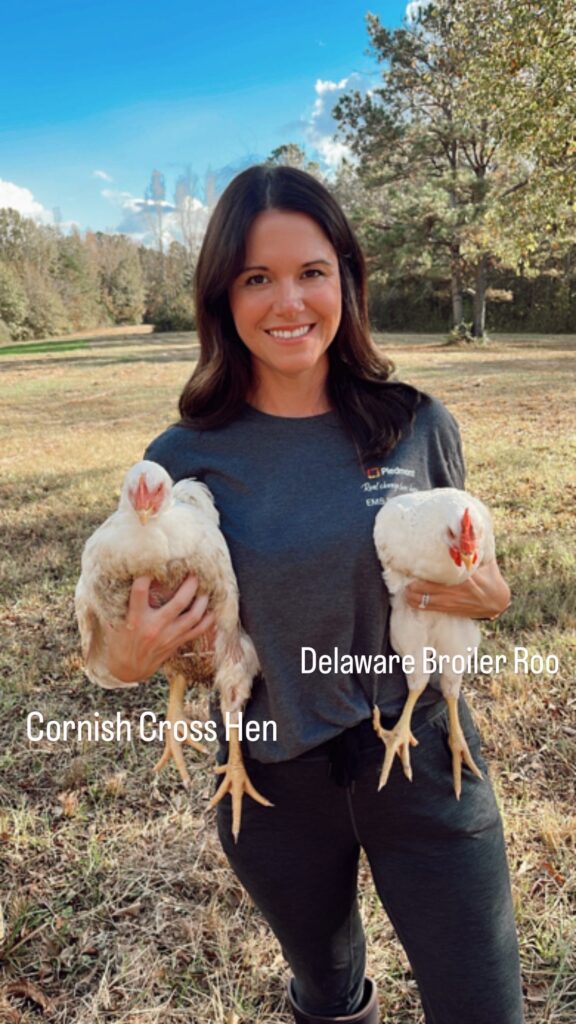
4. Ease of processing
Cornish Rock Cross have a plumage of white feathering. However, their feathers aren’t as full as a heritage breed. This makes them very easy to process. With the right equipment, you can have a bird completely de-feathered in under 1 minute. Plucking the birds by hand is also much easier.
The first breed of chickens we ever processed were barred rock roosters. It took nearly 20 minutes to pluck them by hand because they had thick feathers all over their body.
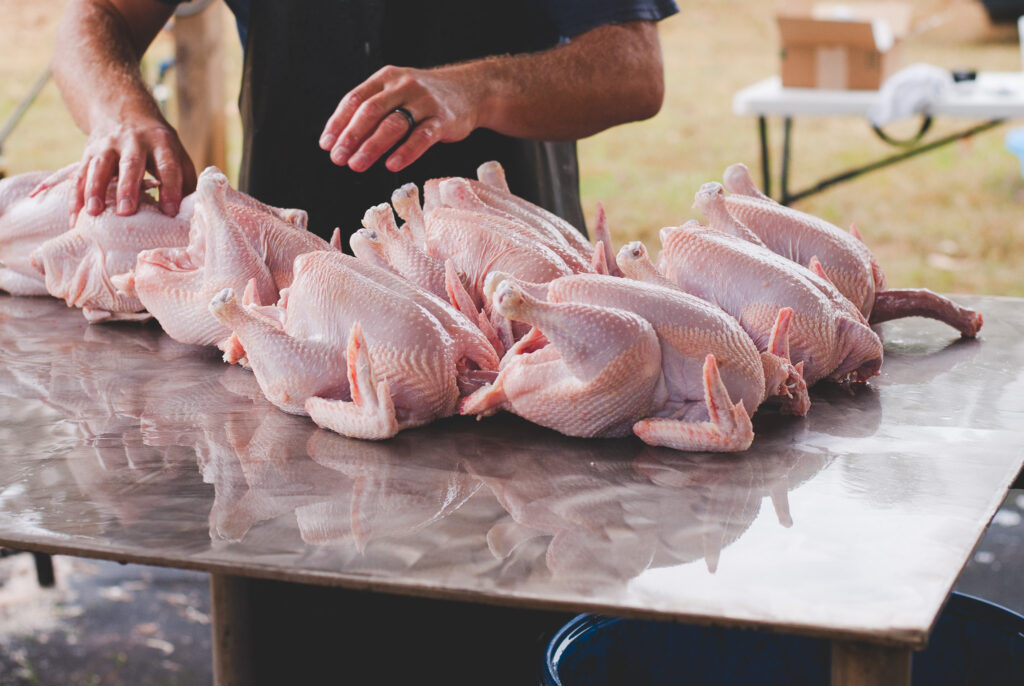
5. Overall Cost
If you’re a small farm or homestead you know that every dollar counts. The larger bodies, faster growth rate, better feed conversion, and ease of processing will save you so much more money than a heritage breed broiler. You can have almost double the product in the same amount of time it will take you to raise a single batch of heritage breeds.
Cons of raising Cornish Cross Rocks
While I feel there are a lot of benefits to this breed, there are some things you need to consider before deciding on what is right for you.
1. Cornish Cross don’t pasture well
We raise our broilers in an open chicken tractor using rotational grazing while allowing them a little free-ranging time during the day. If you have a good pasture set up, they’ll consume a portion of their diet as forage and bugs.
However, this will not be enough for broilers. They’ll need a supplemental feed of 20-22% protein to grow. Their size limits their ability to forage as well as other breeds.
2. Their growth rate can be too fast
These birds are bred to eat. It’s all they care about. They’ll eat without ever stopping if you let them. Allowing them unlimited access to food after week-2 will result in their bodies growing very fast. Their legs and organs won’t be able to keep up with their growth rate and they can injure themselves.
You have to ration their food and only give them access to it for 12 hours a day. This will help them to have a slower, healthier growth rate.
I allow my birds to free range during the day. This gives them plenty of exercise, helps them to forage more, and be an overall healthier bird. However, because they are getting regular exercise, they reach a processing weight in 9-10 weeks.
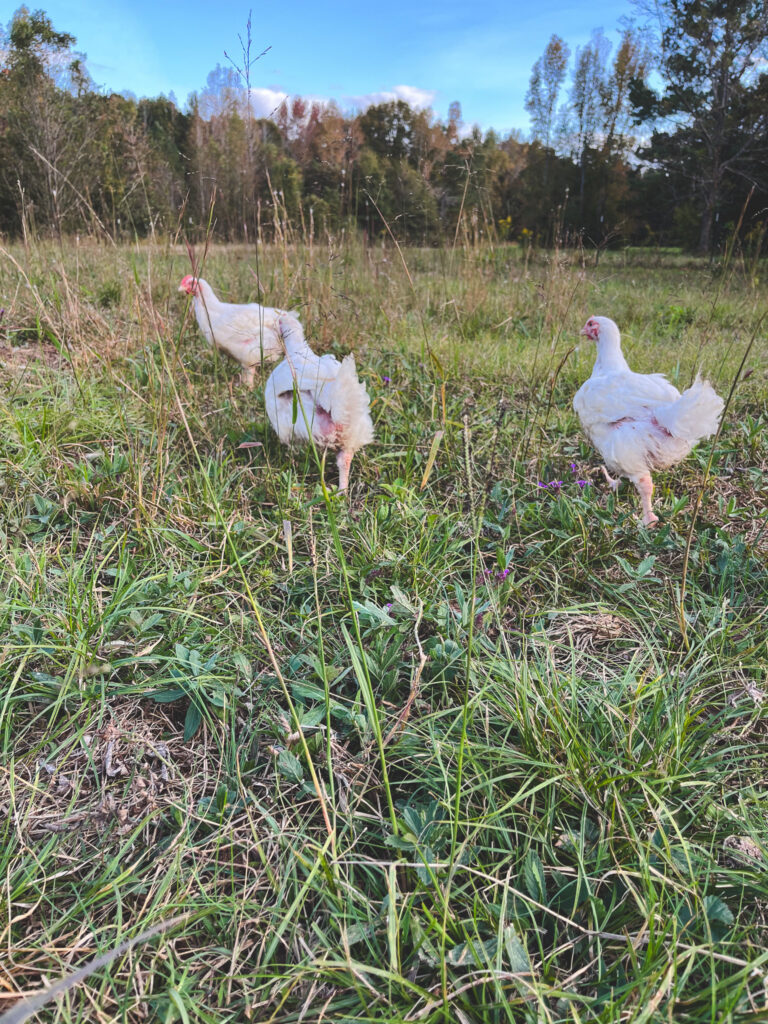
3. Fragility
Cornish Cross Rocks are very fragile birds. Due to their size and growth rate, they can’t handle temperature extremes very well. The hot summers here in the south are very hard on this breed.
You may have to adjust the season you raise the birds to make sure the outside temperatures are appropriate. They won’t do well in temperatures that are very cold or very hot.
We have had a lot of success raising our birds in the spring in fall. However, if you live in a very cold climate, you may want to raise them in the summer.
4. Overall Demeanor
Cornish Cross broilers don’t behave like other chickens. Their large bodies and drive to eat cause them to be kind of lazy. You won’t find them flying on top of the barn, or scratching around the yard.
This is something I struggled with after raising them for the first time. I wondered about their quality of life. I like to watch my chickens being chickens, and they have no interest in that.
They’re also very dirty. They don’t dust bathe or clean themselves very well. If you’re looking for a traditional chicken personality, they may not be for you.
5. Effort and time commitment
These birds take a lot of effort to raise. If you’re pasturing them, they’ll need to be moved every day to maintain your pasture quality and sanitation for them.
We also feed our birds twice daily to maintain a healthy growth weight without running the risk of overfeeding. Both of these factors combined make these high-maintenance birds. Heritage broilers will free-range better and require less hands-on time.
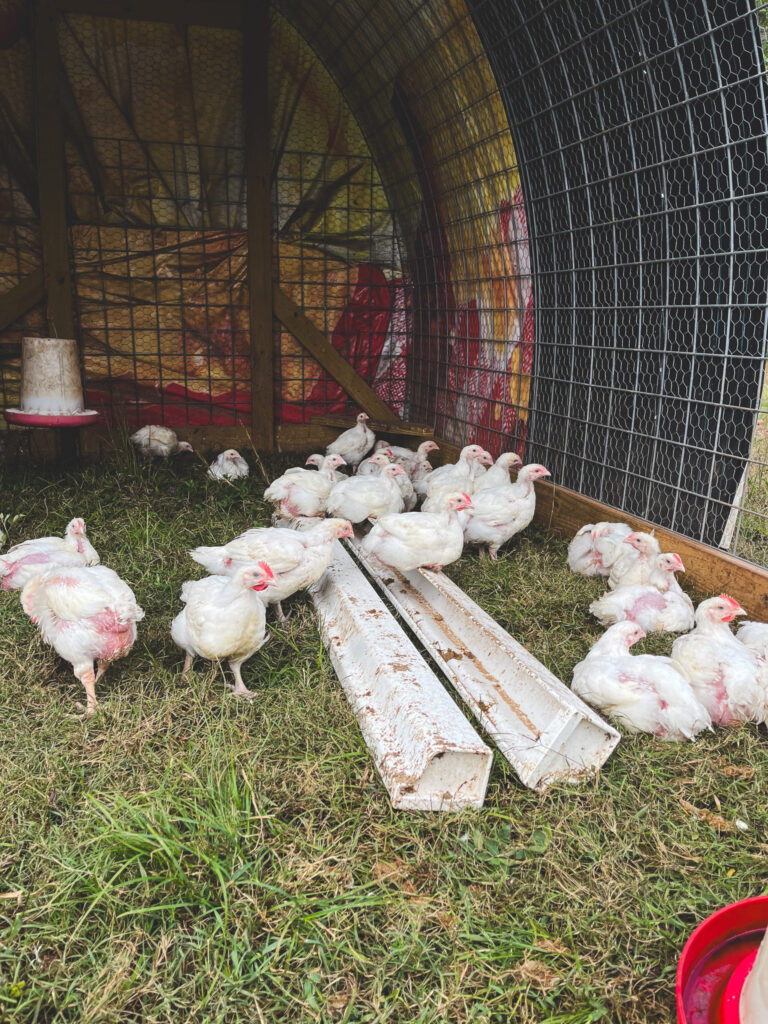
6. Sustainability
This is probably the biggest conflict with raising these birds on a small homestead. As I mentioned before, their growth rate as well as their large breast and thighs have been achieved through years of selective breeding. If you want a sustainable meat source, the Cornish Cross Rocks aren’t a great choice.
They won’t reproduce well at all due to their decreased egg production, and health problems once they reach sexual maturity. If they make it to maturity and are able to mate, their chicks also wouldn’t be true to the breed.
If you’re looking for a sustainable meat source a heritage breed is the best choice. We also raise Delaware broilers on our small farm for that reason.
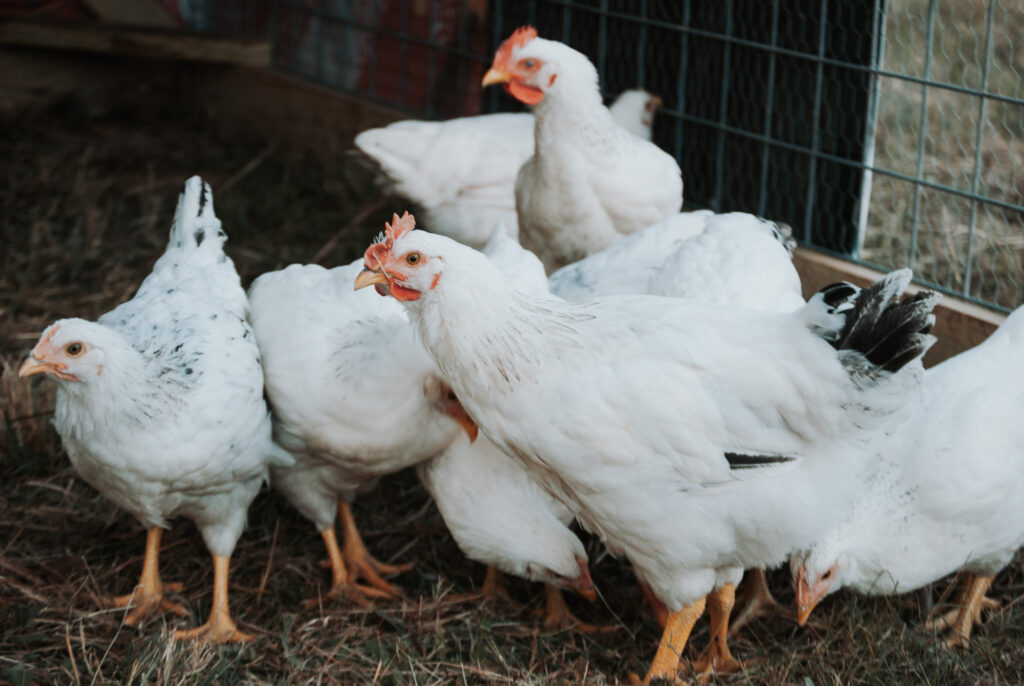
Cornish Cross Rock Conclusion
I hope this article has given you a lot of information if you’re considering Cornish Cross broilers
They have a great flavor, growth rate, and overall cost of raising them. While they aren’t sustainable, they’ll make up for it in the numbers you can raise in a growing season.
If you’re looking for more information on heritage breeds vs Cornish Cross Rocks check out this website.
If you enjoyed this article, please share it! Thanks for visiting my farm.
I live in a cold climate and the Cornish cross thrive very well, The heat bothers them more than anything else. When I was younger before Cornish cross were available widely to individuals we raised White rocks for meat. My Dad managed a GLF store (later Agway) and chick day was thousands of white rocks. He would bring home 100 birds and they were my responsibility. The roosters were our meat and we would process them at 4-7 lbs to get a variety of sizes. The hens laid nice sized brown eggs and would become fowl used for chicken soup and chicken fricassee with dumplings. You never see fowl in stores now because of the move to Cornish cross. I have been growing Cornish cross now for meat for over 35 years, , they do take a little extra time, but the pay off is a vastly shorter time, and much more meat. I just put a batch in the freezer that got away from me, I was wanting 4 lb birds for roasting, but I was tied up with fencing for the cows and they ended up 6-8 lbs in 6 weeks for a total of 103 lbs of dressed chicken. I usually let them go to 15 weeks and end up with birds as big as 16-18 lbs that are cut up for the freezer.
Wow, 16-18 pounds! I agree that the time it takes to raise them is what makes them our top choice. We’ve raised other breeds for meat and they don’t compare to the Cornish-Cross.